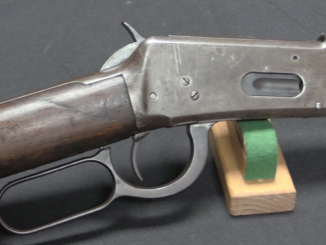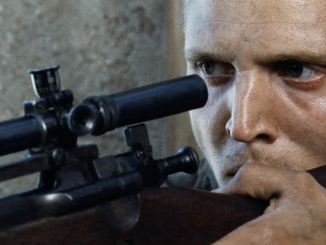The first production of a carbine model of the Trapdoor Springfield was the Model 1870 (excluding 4 prototypes produced in 1868). There was a focus infantry rifles in theTrapdoor program, and just 362 of these carbines were made in 1870. They use the short receiver of the 1870 rifle, a 21 3/4” barrel, a slinger and ring on these in place of sling swivels, and are not serialized. They also use a unique narrow rear sight slider, for no apparent reason.
The 1870 pattern was the last of the .50-70 Trapdoors, to be supplanted in 1873 by the new .45-70 cartridge. The two main improvements of the type were the shorter receiver (the use of sleeved barrels previously made a longer receiver necessary) and an increase in the opening arc of the breech block (to make it less likely to fall shut inadvertently).




My grandfather was in the state guard during the Kaiser War and they were issued Springfield trapdoors when they performed guard duty. Granddad said at least he had confidence the bayonet would work
Giggle!
I half-suspected your grandfather’s lack of confidence in the rifle had to do with ballistic qualities of the .45-70 round (plus all the black-powder smoke). You clearly won’t be able to out-shoot a Mauser.
What is Kaiser war ?
World War I. The German leader was Kaiser Wilhelm.
First World War.
The United States wasn’t the only country to issue obsolete weapons to rear-area troops. Britain issued PW camp guards Martini-Henry and Snider rifles. France issued Remington Rolling Blocks, many of them in .43 Spanish (11.15 x 58R), bought surplus from Remington in the U.S.
As with artillery, none of the combatants realistically anticipated what a 20th Century war’s demands on small-arms production would be.
cheers
eon
And Russia issued ANYTHING they could get. Even black powder rifles – Berdan II, of course, but also Gras, Kropatschek, and Vetterli-Vitali (“the Vetterli rifle is bad but it’s better than a stick” as British (who paid for the rifles) would put it). At least Berdan II was actually issued en masse and used in battles.
Assuming the rear sight distance graduations are different for the carbine than for the rifle, maybe the sight slider was made narrower to let armorers know which replacement rear sight to use for the shorter barrel.
BTW, if one owns a Trapdoor Springfield, is 45-70 ammunition still available (presumably a special order for your LGS)Black powder or smokeless
Yes, .45-70 ammunition is still available? Black powder cartridges are a special order item. Smokeless cartridges are very common, since .45-70 remains a popular lever-action rifle and big game cartridge in North America. If contemplating smokeless in a trapdoor Springfield it is best to either load your own mild smokeless reloads, or get one of the milder Remington loads which were developed with the Trapdoor in mind…
I’ve got a Sharps in .45-70, and all of the dies and bullet moulds and so on to make my own smokeless or black powder cartridges, but so far I’ve been working on the obsolete .43 Spanish. Soon, I hope…
I just inherited a 1873 Springfield trapdoor from my dad who died a couple of weeks ago.
I have shot it over the years as I reload for 45-70. I plan to shoot it ever year in his birthday which is at thanksgiving time.
For those thinking the 45-70 is an anemic or outdated cartridge, think again…
I also have a Marlin 1895 in 45-70, as do both my sons in law, and my son has a 45-70 in Winchester 1886…we live and hunt in Montana and the 45-70 is a great cartridge for many larger animals…matter of fact, that round will take anything in North America…Griz, Moose, Elk, and black bear, as well as medium sized game like mule & white tail deer.
Well said.
I kill whitetail deer with my 45-70.